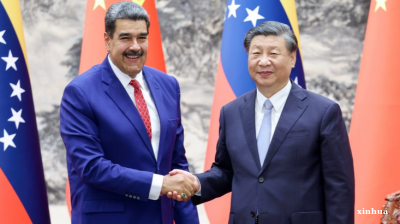India’s Northeast is gaining renewed strategic and economic significance as the country recalibrates its regional posture amid evolving geopolitical dynamics - particularly its complex ties with China and a recent diplomatic cooling with Bangladesh under Dhaka’s interim government. Traditionally underdeveloped compared with mainland India, the eight-state northeastern region is now central to New Delhi’s vision of national security and economic resilience.
Taking into account this shift, the Indian government convened the Rising North East Investors Summit 2025 on May 23 at Bharat Mandapam, New Delhi. The event brought together policymakers, industry leaders, and investors to explore opportunities across infrastructure, tourism, mining, oil and gas, and renewable energy. At the heart of the summit was the ambition to reimagine the Northeast not only as a developmental priority but also as a green energy hub and a strategic export corridor to neighbouring countries.
Leading Indian business groups, including Reliance, Adani, and Vedanta, announced substantial investment commitments during the summit, collectively running into billions of dollars. While these span several sectors, the government’s primary focus remains on accelerating the growth of renewable energy - seen as the foundation for long-term prosperity in the region.
Over the past five years, India has made significant strides in renewable energy. Official figures show that wind and solar generation nearly doubled between 2019 and 2024, rising from 110 TWh to 215 TWh. This growth has pushed India ahead of Germany in renewable electricity output, cementing its position as one of the world’s leading producers of green energy. India is currently among ten countries targeting 500 GW of clean energy capacity by 2030 - a goal central to both its climate commitments and energy security.
At the summit’s ministerial session on "Green Northeast: Advancing Renewable Energy for Sashakt Bharat", Union Minister for New and Renewable Energy Pralhad Joshi underscored the region’s pivotal role in the country’s energy transition, according to a government release. He highlighted the Northeast’s untapped potential of over 129 GW in large hydroelectric projects and an additional 18 GW in pumped storage capacity. Coupled with growing regional energy demand and cross-border connectivity, the Northeast is well-positioned to emerge as a key player in India’s clean energy future.
Describing the region as India’s “Ashtalakshmi” - symbolising eight sources of prosperity - Joshi said each state has the capacity to transform its natural wealth into sustainable economic assets. He also emphasised the region’s role in ensuring nationwide grid stability through the ‘One Nation, One Grid’ initiative.
Investor interest was strong, with 115 Memoranda of Understanding (MoUs) signed between state governments and private companies, collectively worth INR388.56bn ($4.4bn). These commitments reflect rising confidence among corporates, provided policy frameworks and infrastructure continue to improve.
To back this momentum, the Ministry of New and Renewable Energy (MNRE) has set aside 10% of its yearly scheme budget specifically for the Northeast. New Delhi is also extending enhanced financial incentives, including 10% higher Central Financial Assistance (CFA) under the PM Surya Ghar Muft Bijli Yojana and 20% higher CFA for Components B and C under the PM-KUSUM scheme, which supports solar-powered agriculture. PM Surya Ghar Muft Bijli Yojana and PM-KUSUM scheme are federal government schemes meant to boost the solar industry in the rural areas of India. These programmes have been very well received and have helped boost the industry in recent years.
These incentives are already bearing fruit. A 20-MW solar park has been established in Mizoram’s Champhai district, while Assam is developing a 25-MW green hydrogen project and is home to India’s first pure green hydrogen facility.
Alongside infrastructure, the government is investing in human capital. More than 2,000 individuals in the region have received technical training through renewable energy skill development initiatives such as Suryamitra, Varunmitra, and Jal Urjamitra, aimed at building a skilled workforce for the sector’s expansion.
Looking ahead, the Northeast is being positioned as a future hub for clean energy exports. Its proximity to Myanmar, Bangladesh, and Bhutan gives it a strategic advantage in cross-border electricity trade. Minister Joshi noted the region’s potential to support India’s compliance with international climate regulations, such as the EU’s Carbon Border Adjustment Mechanism, by enabling certified green power exports.
He concluded by urging Indian industry to seize the opportunity to shape the Northeast’s transformation, assuring investors of full government backing through single-window clearances, capital subsidies, and accelerated development of dedicated solar parks.
bneGREEN

China has no clear coal exit strategy as new projects hit decade high
China is failing to set out a coherent plan to phase out coal despite record growth in renewable energy and the approach of key climate deadlines, according to new research released on August 25.

China’s new mega-dam project threatens water war with India
China’s decision to construct the world’s largest hydropower dam on the Yarlung Zangbo river in Tibet has intensified fears in New Delhi of a looming water crisis, with Indian officials warning the project could reduce dry-season flows into India

New expedition finds Azerbaijan’s Tufandag glacier continues to shrink
Glaciers are among the clearest indicators of global climate change with any warming or cooling quickly reflected in changes to their surface area.

US EPA’s controversial Climate Crisis report is full of lies and mistakes
The US Environmental Protection Agency (EPA) released a controversial report in July claiming the effects of the Climate Crisis were overblown. A fact check by Carbon Brief found it is full of lies and errors.



_1756222537.jpg)